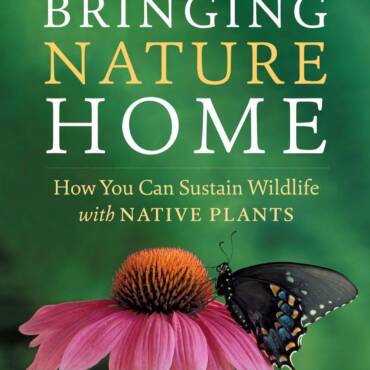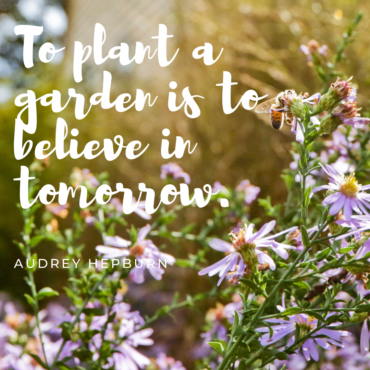Use our 6 P’s to help you achieve Tomato Bliss this summer:
- Picking
- Placing
- Planting
- Pruning
- Pairing
- Protecting
If you follow these steps carefully, you’ll be able to really enjoy the 7th and best “P”: Plate!
Picking
There are 2 major types of tomatoes to choose from; select the one that best fits your space
- Indeterminate: Vining type that needs physical support – such as trellises or stakes. These are grown in beds
- Determinate: best type for containers as they are not a vining tomato and grow more like a bush
Heirloom or cultivated varieties? We love our heirlooms, but recommend that you also purchase disease resistant cultivars,- Verticillium wilt, fusarium wilt, and nematode resistance are bred into tomatoes labeled ‘VFN’
Placing
- All Tomatoes require at least six hours of sunlight
- Vegetables should not be planted in a spot where any of the same plant family has grown the previous season. Rotate where you plant your tomatoes each year when you can; tomatoes are in the Solanaceae family. Do not plant following other tomatoes, potatoes, peppers or eggplant
- Optimal soil pH for tomatoes is between 6 and 6.8. Perform a soil test every three years if possible to understand the soil you are planting in. Backyard Bounty can perform and interpret soil tests for you and help with interpreting them
Planting
- Plant after last frost date for your area (http://extension.umd.edu/growit/beyond-basics/spring-frostfreeze-dates-maryland)
- Spacing: Indeterminate and Determinate varieties need an average spacing of 15” apart, so long as they are supported by stakes. Unsupported determinates need to be 24” apart
- Prepping the tomato bed: Don’t stand directly on your tomato bed or you will compact the soil, reducing air pockets in the soil where roots grow
- Loosen the sub-soil at a depth of 12-18” by pushing the tines of a garden fork back and forth across the planting area
- Amend the top 12” of soil with a third compost and turn it into the soil underneath. If this is a new vegetable bed or one that has not been amended with organic matter in a long time, spread a layer of compost 6” deep over the top of the bed and turn it in to the soil underneath to a depth of 12”
- Plant deep, deep, deep!! Dig a hole deep enough that only 4” of the tomato plant is showing above the soil
- You do not need to remove any lower leaves that are being buried. New roots are going to grow from both the main stem and from the leaf branches
- Place plant in the hole and fill hole with a mix of 1/3 compost and 2/3 soil
- Place the stake or tomato cage in the hole at the same time. If you leave this until later you will kill roots when placing the support system near the tomato plant
- Plan on routinely adding 1-2” of compost to your vegetable garden in spring and fall each year. A good compost should be dark, crumbly and have an earthy smell to it. ‘Leafgro’ is a reliable form of compost that you can purchase in bags in most nurseries. Keep “side-dressing” plants with compost throughout the growing season to increase nutrient availability and to add further water-holding material to the soil
Pruning
- Not so necessary for Determinate varieties, but essential for Indeterminates.
- Pinch the tip off of tomato plants that are long and leggy when you purchase them. Pinching the tip will create a bushier plant. You can also pinch off the tip of an established plant once the plant reaches the top of its stake or trellis
- Once the plant is in the ground a couple of weeks or so, start pruning out the suckers as soon as they appear. These are the shoots produced in between the main stem and a leaf (in the “leaf crotch”), that will become further main stems- you’ll sacrifice some tomatoes with this pruning, but the fruit you get will be bigger and tastier
Pairing
You can plant smaller plants around tomatoes to shade the soil and to keep down weeds and prevent the soil from drying out
- On the north side of tomatoes plant either salad greens or peas (up a trellis which will also protect young tomato plants from the drying effects of wind)
- Attract beneficial insects by plantings nearby that have flowers attractive to pollinators (including basil, cilantro, hyssop), as well as native perennials that attract pollinators such as milk weed, asters, goldenrod, and Black Eyed Susans
Some folks believe African Marigolds and Nasturtiums help repel pests from tomato plants, but the research is inconclusive. However, they make the vegetable garden prettier so go for it
Protecting – Water and Mulch
Watering: An average of 1” of rainfall is needed per week for most vegetables to grow well. Measure rainfall with a rain gauge
- Hand watering is the most common source of additional water
Avoid watering tomatoes from overhead so that leaves don’t get too wet. Wet leaves spread fungal diseases such as Early or Late Blight and bacterial diseases or viruses such as various kinds of wilt (e.g. verticillium and fusarium - Water in the morning when possible so that the sun can help dry leaves that get wet. It is best to water deep and long; frequent, shallow watering encourages shallow roots and weaker plants
- Decrease amount of water for tomatoes once you start to harvest the fruits.
- Mulch tomatoes well. The best organic mulches for tomatoes include: shredded leaves, compost and grass clippings from a non chemically-treated lawn





